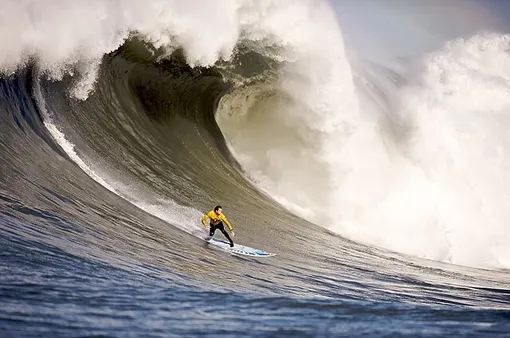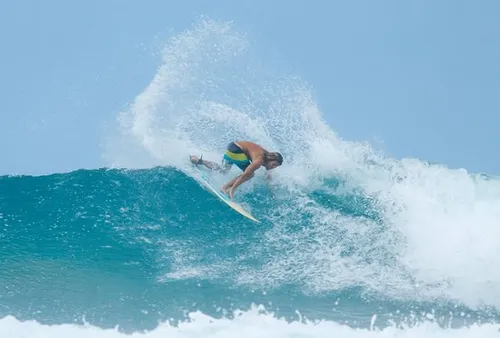Table of Contents
Surfing is a thrilling and exhilarating sport that offers an escape from the ordinary. Whether you're a seasoned surfer or just starting out, finding the best surfing spots and conditions is essential for a successful and enjoyable surfing experience. In this comprehensive guide, we'll take you on a journey to discover the secrets of finding the perfect waves. From researching surf conditions and visiting local surf breaks to understanding surfing etiquette and safety, we'll cover everything you need to know to make the most of your time in the water. So, grab your board, get ready to dive into the world of surfing, and let's catch some epic waves together!
I. How to Find the Best Surfing Spots
How to Find the Best Surfing Spots
Surfing is a thrilling and exhilarating water sport that offers a unique blend of physical activity, mental focus, and connection with nature. Whether you're a seasoned surfer or just starting out, finding the best surfing spots can make all the difference in your experience. Here are some tips to help you find the perfect waves for your next surfing adventure:
Research and Preparation:
Before you hit the beach, it's essential to do your research and gather information about potential surfing spots. Online resources, such as surf reports, weather forecasts, and local surf communities, can provide valuable insights into the conditions and suitability of different beaches for surfing. Additionally, consulting with experienced surfers or local surf shops can offer firsthand knowledge and recommendations.
- Check surf reports and forecasts for wave height, wind direction, and swell size.
- Read reviews and recommendations from other surfers online.
- Talk to local surf shops and experienced surfers for advice.
Consider Your Skill Level:
When choosing a surfing spot, it's crucial to consider your skill level and experience. If you're a beginner, it's best to start with beaches that offer gentle waves and sandy bottoms. As you progress and gain more confidence, you can gradually move on to more challenging spots with bigger waves and rocky coastlines.
Skill Level | Suitable Surfing Spots |
Beginner | Sandy beaches with gentle waves |
Intermediate | Beaches with moderate waves and some rocky areas |
Advanced | Beaches with large waves and challenging conditions |
Local Knowledge and Safety:
Surfing can be a potentially dangerous sport, so it's essential to prioritize safety and seek local knowledge. Familiarize yourself with the beach's rip currents, tides, and potential hazards. If you're new to a particular spot, consider taking a lesson from a qualified surf instructor who can provide guidance and ensure your safety.
- Learn about the beach's rip currents, tides, and potential hazards.
- Consider taking a lesson from a qualified surf instructor.
- Always surf with a buddy or in a group.
Respect the Environment:
Surfing is a sport that relies on the beauty and integrity of the natural environment. As a surfer, it's essential to respect and protect the marine ecosystem. Avoid littering, use eco-friendly sunscreen, and be mindful of your impact on the beach and surrounding areas.
By following these tips and conducting thorough research, you can find the best surfing spots that match your skill level, preferences, and safety considerations. Remember to prioritize safety, respect the environment, and enjoy the thrill of riding the waves.
If you're looking for more information on surfing, check out our related posts on How to Choose the Right Surfboard, The Benefits of Surfing, and The Best Surfing Equipment.
II. How to Find the Best Surfing Conditions
How to Find the Best Surfing Conditions
The first step to finding the best surfing conditions is to do your research. Look online for surf reports and forecasts, and read up on the different surf breaks in your area. You can also talk to local surfers for their recommendations. Check surf websites, forums, and social media groups for the latest updates on surf conditions in your area.
Once you've got a general idea of where to look, start checking the conditions yourself. Look for waves that are clean and glassy, with no white caps. The water should be clear and free of debris. And the wind should be offshore, so that it's pushing the waves towards the shore.
Condition | Description |
|---|---|
Wave height | The height of the waves, measured from the trough to the crest. |
Wave period | The time between two consecutive waves. |
Wind speed | The speed of the wind, measured in knots. |
Wind direction | The direction that the wind is blowing from. |
Water temperature | The temperature of the water, measured in degrees Fahrenheit. |
III. How to Choose the Right Surfboard for Your Skill Level and Style
Once you've found the right surfing conditions, you need to choose the right surfboard. If you're a beginner, you'll want to choose a board that is long and wide, with plenty of volume. This will make it easier to paddle and catch waves. As you get more experienced, you can start to experiment with different types of boards, such as shorter boards or boards with different shapes.
No matter what your skill level, it's important to make sure that your surfboard is the right size for you. A board that is too big will be difficult to control, while a board that is too small will be unstable and difficult to catch waves on. You can find a surf shop near you where you can get help choosing the right surfboard for your needs.Surfer Lingo for Beginners
IV. Tips for Finding the Best Surfing Spots and Conditions
Tips for Finding the Best Surfing Spots and Conditions
Surfing is an exciting and exhilarating sport that can be enjoyed by people of all ages and skill levels. Whether you're a beginner just starting out or an experienced surfer looking for the perfect wave, finding the best surfing spots and conditions is essential for a great surfing experience. Here are some tips to help you find the best surfing spots and conditions:
- Check the surf reports: Surf reports provide valuable information about the current and forecasted surf conditions, including wave height, swell direction, wind speed and direction, and water temperature. Reputable surf forecasting websites and apps offer detailed surf reports for different surf spots around the world.
- Consider the tides: The tides can significantly impact the surf conditions. Low tide can expose reefs and sandbars, creating ideal conditions for experienced surfers. However, it can also make paddling out more challenging. High tide can provide more forgiving conditions for beginners and intermediate surfers, but it can also result in smaller waves. Plan your surf session according to the tide to make the most of the conditions.
- Look for the right wind conditions: Wind direction and speed can have a significant impact on the surf conditions. Offshore winds, which blow from the land towards the ocean, typically create cleaner and more consistent waves. Onshore winds, which blow from the ocean towards the land, can create choppy and disorganized waves. In general, side-shore winds can also affect the shape and size of the waves.
Once you've done your research and planned your trip, it's time to head to the beach and start surfing. Here are some additional tips to help you make the most of your surfing session:
Surfing Equipment | Description |
|---|---|
Surfboard | The most important piece of surfing equipment, surfboards come in various shapes and sizes to suit different skill levels and wave conditions. |
Leash | A leash connects you to your surfboard, preventing it from being swept away by waves. |
Wetsuit | Wetsuits help keep you warm and protected from the cold water, especially during colder months. |
Surfboard Wax | Surfboard wax provides traction on the deck of your surfboard, helping you stay in control while surfing. |
Fins | Fins are attached to the bottom of your surfboard and help you maintain stability and control while surfing. |
Follow these tips, and you'll be on your way to finding the best surfing spots and conditions and having an unforgettable surfing experience. So grab your board, hit the beach, and start riding the waves!
V. Additional Resources for Finding the Best Surfing Spots and Conditions
Additional Resources for Finding the Best Surfing Spots and Conditions
Surf Forecast Websites and Apps
These websites and apps provide detailed surf forecasts for specific locations, including wave height, period, direction, and wind conditions. They can be a valuable tool for planning your surf trip.
Surf Magazines and Blogs
Surf magazines and blogs can provide you with the latest news and trends in the surfing world, as well as tips and advice from professional surfers. They can also be a good source of information about new surf spots and conditions.
Local Surf Shops
Local surf shops are a great place to get information about the best surf spots and conditions in your area. The staff at these shops are usually surfers themselves and are happy to share their knowledge with you. They can also help you choose the right surfboard and other gear for your needs.
Surf Schools and Camps
Surf schools and camps can be a great way to learn how to surf or improve your skills. They typically offer lessons for all levels of surfers, from beginners to advanced. Surf schools and camps can also provide you with information about the best surf spots and conditions in the area.
Social Media
Social media can be a great way to stay up-to-date on the latest surf conditions and to connect with other surfers. There are many surf-related groups and pages on social media, where you can share photos and videos of your surf sessions, ask questions, and get advice from other surfers.
VI. Conclusion
The decision to cut interest rates is a complex one, with both potential benefits and risks. While lower interest rates can stimulate economic growth and make borrowing more affordable, they can also lead to inflation and currency devaluation. Ultimately, the decision of whether or not to cut interest rates is a judgment call that must be made by the central bank, taking into account all of the relevant economic factors.